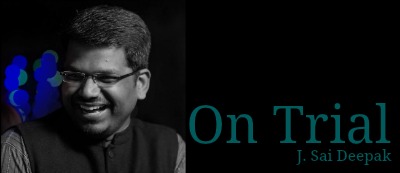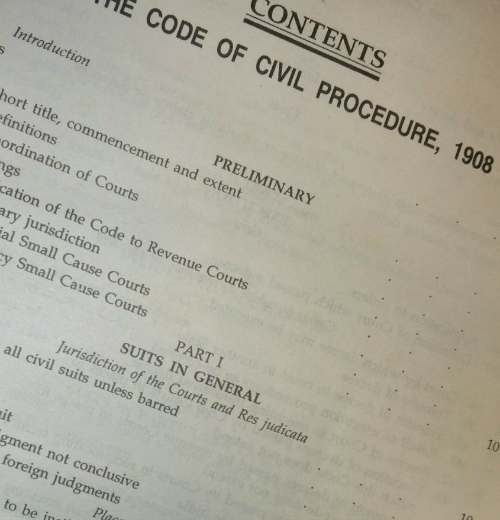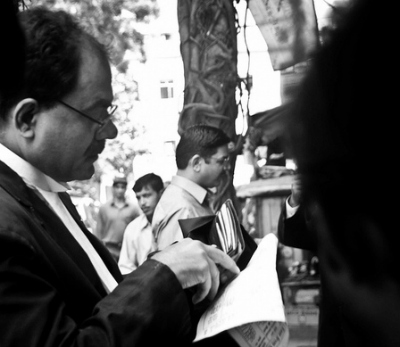 There are some terms that are frequently used in the Code of Civil Procedure, 1908 (“CPC”), and it is important to understand them well because the maintainability of a civil action can depend on your understanding. As you know, the court will not address the merits of a dispute until it is prima facie satisfied about the maintainability of an action.
There are some terms that are frequently used in the Code of Civil Procedure, 1908 (“CPC”), and it is important to understand them well because the maintainability of a civil action can depend on your understanding. As you know, the court will not address the merits of a dispute until it is prima facie satisfied about the maintainability of an action.
Cause of action, act, and interest
In Orders 1 and 2 of the CPC, where joinder of parties and causes of actions are discussed among other things, one frequently comes across the terms “cause of action”, “interest”, and “act or transaction”. While Order 1 Rule 1 refers to “acts or transactions”, Order 1 Rule 8, which permits the filing of a representative suit, clarifies in its explanation that those claiming to file a representative suit need only have the “same interest”, they need not have the “same cause of action”. What do these terms mean?
An “act or transaction” is different from “cause of action”. The former gives rise to the latter. An actionable cause arises from an act when the act amounts to the infraction of a party’s right. For instance, selling a patented product without consent is an act which gives rise to a cause of action in favour of the patentee. The same act could also give rise to different causes of action in favour of the same right owner or several right owners. In the example above, the sale of a product could result in infringement of a patent as well as a trademark held by the same individual or could infringe several patents held by unrelated parties.
In contrast to Order 1, Rule 1, which deals with joinder of plaintiffs and Order 1, Rule 3 which deals with joinder of defendants, Order 1, Rule 8,which permits filing of a representative suit, uses the term “interest” to increase the scope for joinder of parties beyond what is provided in Rules 1 and 3. The word “interest” has been used to facilitate adjudication of all questions which arise from the same set of acts or transactions. This provision is intended to avoid multiplicity of litigation where all persons are aggrieved by the same acts or transactions. Importantly, this permits one person to represent all other “interested parties”. For instance, if a host of tenants have an issue with an act or acts of the landlord, instead of filing multiple suits or instead of naming all tenants as parties in one suit, one tenant may represent the rest. Therefore, Rule 8 enlarges the scope of joinder of parties so long as there is a communion of “interest” between the parties.
The distinction between “act or transaction”, “cause of action”, and “interest” affects the maintainability of a civil action. The failure to disclose a prima facie cause of action, for instance, would result in the dismissal of a suit at the outset under Order 7, Rule 11. Similarly, to justify arraying a host of parties as defendants, a plaintiff must set out their relationship inter se, along with their nexus to the transaction which has given rise to the cause of action in favour of the plaintiff against all the defendants. Should the plaintiff fail to justify this, his plaint could be assailed for misjoinder of parties or non-joinder of necessary parties.
Now, let us look at “facts” and “particulars”, two terms that occur frequently in relation to pleadings in Order VI.
Facts, material facts, and material particulars
 Order VI of the CPC, as discussed earlier, deals with pleadings. It uses the terms “material facts” and “particulars” in different places. Are “material facts” and “particulars” the same? The rules of statutory interpretation and even a common sense understanding of the English language tell us that there is a clear difference. “Facts” refer to the broad matrix or the canvas in the backdrop of which a dispute is contested. “Material facts” are those facts which must find mention in a party’s pleadings in order to establish a claim. “Particulars”, on the other hand, refer to the addition of greater detail to the facts.
Order VI of the CPC, as discussed earlier, deals with pleadings. It uses the terms “material facts” and “particulars” in different places. Are “material facts” and “particulars” the same? The rules of statutory interpretation and even a common sense understanding of the English language tell us that there is a clear difference. “Facts” refer to the broad matrix or the canvas in the backdrop of which a dispute is contested. “Material facts” are those facts which must find mention in a party’s pleadings in order to establish a claim. “Particulars”, on the other hand, refer to the addition of greater detail to the facts.
The absence of material facts prejudices a party’s case at the outset. The absence of material particulars on the other hand, is curable. The Supreme Court has discussed the distinction between material facts and particulars in Udhav Singh v. Madhav Rao Scindia (1975). In this case, the Court held that “all primary facts which must be proved at the trial by a party to establish the existence of a cause of action or his defence are material facts”. The Court also explained the consequences of the absence of material facts and material particulars.
“The distinction between “material facts” and “material particulars” is important because different consequences may flow from a deficiency of such facts or particulars in the pleading. Failure to plead even a single material fact leads to an incomplete cause of action and incomplete allegations of such a charge are liable to be struck off under Order 6, Rule 16, Code of Civil Procedure.
If the petition is based solely on those allegations which suffer from lack of material facts, the petition is liable to be summarily rejected for want of a cause of action. In the case of a petition suffering from a deficiency of material particulars, the court has discretion to allow the petitioner to supply the required particulars even after the expiry of limitation.”
These terms not only affect the the maintainability of an action, they also influence a party’s prospects at trial when a party is expected to lead evidence with respect to facts in issue. If such facts have not even been pleaded, the party cannot lead evidence to prove such facts. This would necessitate amendment of pleadings under Order 6, Rule 17, which can be a pretty messy affair.
In the next post, I will discuss interim applications under the CPC and the circumstances in which they may be employed.
J.Sai Deepak, an engineer-turned-litigator, is an Associate Partner in the Litigation Team of NCR-based Saikrishna & Associates. Sai is @jsaideepak on Twitter and is the founder of the blawg “The Demanding Mistress” where he writes on economic laws, litigation and policy. All opinions expressed here are academic and personal.c



